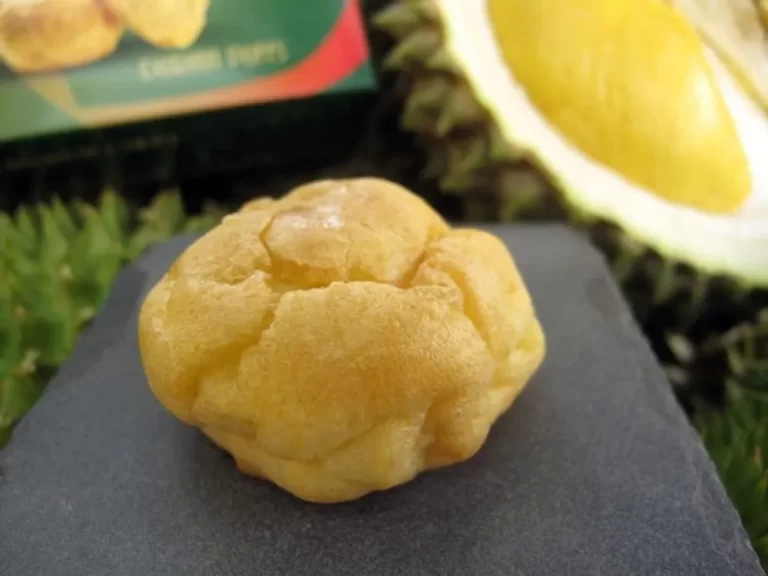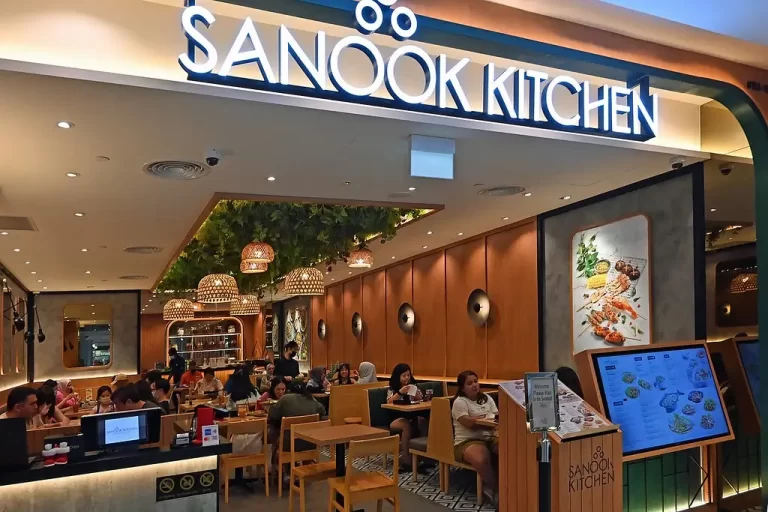Indulge in the Ultimate Sweet Treat: Discovering the Best Chendol in Singapore

Chendol is a popular dessert that originates from Southeast Asia, particularly Singapore. It is a must-try dessert for anyone visiting the city-state. Chendol is a sweet and refreshing treat that is perfect for cooling down in the hot and humid climate of Singapore. It is made with a combination of ingredients such as coconut milk, palm sugar, and pandan leaves, which give it its unique flavor and texture. Whether you enjoy it at a hawker center or a fine dining restaurant, chendol is sure to satisfy your sweet tooth.
Key Takeaways of the Best Chendol in Singapore
- Chendol is a popular sweet treat from Southeast Asia.
- Chendol has a rich history, starting as a street food and evolving into a gourmet delight.
- The ingredients of Chendol include coconut milk, pandan jelly, and palm sugar.
- The best places to find Chendol in Singapore range from hawker centers to fine dining restaurants.
- Chendol can be customized with different variations, such as adding durian or ice cream.
The History of Chendol: From Street Food to Gourmet Delight
Chendol has humble origins as a street food in Southeast Asia. It was traditionally sold by street vendors who would push their carts through the streets, selling this sweet treat to locals and tourists alike. Over time, chendol has evolved into a gourmet dessert that can be found in high-end restaurants and cafes in Singapore.
The popularity of chendol has grown significantly over the years, thanks to its unique flavors and textures. It has become a beloved dessert not only in Singapore but also in other countries in Southeast Asia. Today, chendol is considered a national dessert in Singapore and is often featured on menus as a must-try dish.
The Ingredients of Chendol: Exploring the Flavors and Textures
Chendol gets its distinct flavor and texture from its key ingredients, which include coconut milk, palm sugar, and pandan leaves. Coconut milk gives chendol its creamy and rich taste, while palm sugar adds a caramel-like sweetness. Pandan leaves are used to infuse the dessert with their unique fragrance.
Coconut milk is made by extracting the liquid from grated coconut flesh. It adds a creamy and smooth texture to chendol, making it even more indulgent. Palm sugar, also known as gula melaka, is made from the sap of the coconut palm tree. It has a rich and complex flavor that adds depth to the dessert. Pandan leaves are used to infuse the coconut milk with their aromatic fragrance, giving chendol its signature taste.
The Best Places to Find Chendol in Singapore: From Hawker Centers to Fine Dining
| Place | Price Range | Rating | Address |
|---|---|---|---|
| Maxwell Food Centre | 2 – 3 | 4.5/5 | 1 Kadayanallur St, Singapore 069184 |
| Old Airport Road Food Centre | 2 – 3 | 4/5 | 51 Old Airport Rd, Singapore 390051 |
| Chinatown Complex Food Centre | 2 – 3 | 4/5 | 335 Smith St, Singapore 050335 |
| The Fullerton Hotel Singapore | 12 – 18 | 4.5/5 | 1 Fullerton Square, Singapore 049178 |
| Shangri-La Hotel Singapore | 12 – 18 | 4/5 | 22 Orange Grove Rd, Singapore 258350 |
If you’re looking to try chendol in Singapore, there are plenty of places where you can find this delicious dessert. One of the best places to try chendol is at a hawker center, which is a food court-style dining establishment that offers a wide variety of local dishes at affordable prices. Hawker centers are known for their authentic and delicious food, and chendol is no exception.
Some popular hawker centers in Singapore where you can find chendol include Maxwell Food Centre, Old Airport Road Food Centre, and Tiong Bahru Market. These hawker centers have stalls that specialize in chendol and other local desserts, ensuring that you get the best quality and taste.
If you’re looking for a more upscale dining experience, there are also fine dining restaurants in Singapore that serve chendol. These restaurants often put a modern twist on the classic dessert, using innovative techniques and high-quality ingredients to create a gourmet version of chendol. Some popular fine dining restaurants in Singapore that serve chendol include Odette, Burnt Ends, and Les Amis.


The Top Chendol Variations: Adding a Twist to the Classic Recipe
While the classic chendol recipe is delicious on its own, there are also several variations of this dessert that add a unique twist to the original recipe. One popular variation is durian chendol, which combines the creamy and pungent flavors of durian with the sweet and refreshing taste of chendol. Durian is a tropical fruit that is known for its strong aroma and custard-like texture. When added to chendol, it creates a decadent and indulgent dessert that is loved by many.
Another popular variation of chendol is red bean chendol, which adds cooked red beans to the dessert. Red beans are commonly used in Asian desserts and add a nutty and slightly sweet flavor to chendol. The addition of red beans also gives the dessert a more substantial texture, making it even more satisfying.
The Health Benefits of Chendol: Surprising Benefits of This Sweet Dessert

While chendol is undoubtedly a sweet treat, it also has some surprising health benefits. One of the main ingredients in chendol, coconut milk, is rich in healthy fats that can help improve heart health. It also contains lauric acid, which has been shown to have antimicrobial and antiviral properties.
Palm sugar, another key ingredient in chendol, is a natural sweetener that is lower on the glycemic index compared to refined sugar. This means that it causes a slower rise in blood sugar levels, making it a better option for those with diabetes or those looking to manage their blood sugar levels.
Chendol also contains pandan leaves, which are rich in antioxidants. Antioxidants help protect the body against damage from harmful free radicals and can help reduce the risk of chronic diseases such as heart disease and cancer.
Chendol and Singaporean Culture: How This Dessert Reflects the City-State’s Identity
Chendol has become an important part of Singaporean culture and identity. It is often enjoyed as a dessert after a meal or as a refreshing treat on a hot day. Chendol is also commonly served during festive occasions and celebrations, such as Chinese New Year and Hari Raya.
The popularity of chendol in Singapore is a testament to the city-state’s multicultural heritage. Singapore is a melting pot of different cultures and cuisines, and chendol is a reflection of this diversity. It combines flavors and ingredients from different Southeast Asian countries, creating a unique dessert that is loved by locals and tourists alike.
Making Chendol at Home: Tips and Tricks for Recreating the Perfect Dessert
If you’re feeling adventurous and want to try making chendol at home, here are some tips and tricks to help you recreate the perfect dessert:
1. Use fresh ingredients: The key to a delicious chendol is using fresh ingredients. Make sure to use fresh coconut milk, palm sugar, and pandan leaves for the best flavor.
2. Make your own pandan extract: To infuse the coconut milk with pandan flavor, you can make your own pandan extract. Simply blend pandan leaves with water and strain the mixture to extract the juice.
3. Cook the chendol noodles properly: Chendol noodles are made from rice flour and have a chewy texture. To cook them properly, bring a pot of water to a boil and add the noodles. Cook them until they float to the surface, then remove them from the water and rinse them with cold water to stop the cooking process.
4. Serve chendol chilled: Chendol is best enjoyed chilled, so make sure to refrigerate it for at least a few hours before serving. This will allow the flavors to meld together and make the dessert even more refreshing.
Here’s a simple chendol recipe that you can try at home:
Ingredients:
– 200ml coconut milk
– 50g palm sugar
– 2 pandan leaves
– 100g chendol noodles
– Crushed ice
Instructions:
1. In a small saucepan, heat the coconut milk over low heat. Add the palm sugar and stir until it has dissolved. Remove from heat and set aside to cool.
2. In a separate saucepan, bring water to a boil. Add the chendol noodles and cook until they float to the surface. Remove from heat and rinse with cold water.
3. Cut the pandan leaves into small pieces and blend them with a little water until you get a smooth paste. Strain the mixture to extract the pandan juice.
4. To assemble the chendol, place a handful of crushed ice in a bowl or glass. Add the chendol noodles on top, followed by the coconut milk mixture. Drizzle with pandan juice.
5. Serve immediately and enjoy!
Chendol Around the World: How This Dessert Has Spread to Other Countries
Chendol has become popular not only in Singapore but also in other countries in Southeast Asia, such as Malaysia and Indonesia. In Malaysia, chendol is often served with additional toppings such as sweet corn, grass jelly, and kidney beans. In Indonesia, chendol is known as es cendol and is often served with coconut milk, palm sugar, and shaved ice.
Chendol has also been adapted to suit local tastes and preferences in other countries around the world. In Thailand, for example, there is a variation of chendol called lod chong, which is made with green rice flour noodles and served with coconut milk and syrup. In Vietnam, there is a similar dessert called che ba mau, which consists of three layers of different colored jellies served with coconut milk and crushed ice.
Why Chendol is a Must-Try Sweet Treat in Singapore
In conclusion, chendol is a must-try dessert for anyone visiting Singapore. It is a sweet and refreshing treat that is perfect for cooling down in the hot and humid climate of the city-state. Chendol has a rich history as a street food in Southeast Asia and has evolved into a gourmet dessert in Singapore.
The key ingredients of chendol, such as coconut milk, palm sugar, and pandan leaves, contribute to its unique flavor and texture. Whether you enjoy it at a hawker center or a fine dining restaurant, chendol is sure to satisfy your sweet tooth.
Chendol is not only delicious but also has some surprising health benefits. It is rich in healthy fats, antioxidants, and fiber, making it a healthier dessert option compared to other sweet treats.
Chendol is also a reflection of Singaporean culture and identity. It combines flavors and ingredients from different Southeast Asian countries, showcasing the multicultural heritage of the city-state.
Whether you try chendol in Singapore or make it at home, this sweet treat is sure to leave a lasting impression. So don’t miss out on the opportunity to indulge in this delicious dessert when you visit Singapore.
If you’re a foodie looking to explore the best culinary delights in Singapore, you won’t want to miss out on the article about the Best Chendol in Singapore. But why stop there? Expand your gastronomic journey by checking out our related article on the Best Durian Puff in Singapore. Indulge in the unique combination of creamy durian filling and flaky pastry that will leave your taste buds craving for more. Don’t forget to also explore our recommendations for the Best Dry Laksa in Singapore and the Best Klang Bak Kut Teh in Singapore to complete your culinary adventure.
FAQs of the Best Chendol in Singapore
What is Chendol?
Chendol is a popular dessert in Southeast Asia, particularly in Singapore, Malaysia, and Indonesia. It is made with shaved ice, coconut milk, palm sugar syrup, and green jelly noodles made from rice flour.
What are the best places to find Chendol in Singapore?
There are many places to find Chendol in Singapore, but some of the best include Jin Jin Hot/Cold Dessert, Four Seasons Chendol, and Traditional Haig Road Putu Piring.
What makes a good Chendol?
A good Chendol should have a balance of sweetness and creaminess from the coconut milk, with the green jelly noodles providing a chewy texture. The palm sugar syrup should not be too overpowering and should complement the other flavors.
Is Chendol a healthy dessert?
Chendol is not considered a healthy dessert as it is high in sugar and calories. However, it can be enjoyed in moderation as a treat.
Can Chendol be made at home?
Yes, Chendol can be made at home with the right ingredients and equipment. Recipes can be found online or in cookbooks.
Disclaimer:
The food recommendations provided in this blog are based on our personal experiences, preferences, and research. We strive to share information that is accurate and up-to-date to the best of our knowledge, but we acknowledge that food and nutrition are subjects with varied perspectives and evolving studies.





